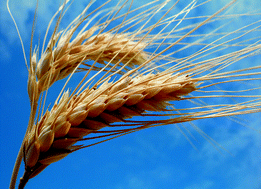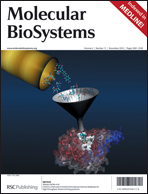Tetraploid wheat (durum wheat) is mainly used for the preparation of pasta. As a result of breeding, thousands of tetraploid wheat varieties exist, but also tetraploid landraces are still maintained and used for local food preparations. Gluten proteins present in wheat can induce celiac disease, a T-cell mediated auto-immune disorder, in genetically predisposed individuals after ingestion. Compared to hexaploid wheat, tetraploid wheat might be reduced in T-cell stimulatory epitopes that cause celiac disease because of the absence of the D-genome. We tested gluten protein extracts from 103 tetraploid wheat accessions (obtained from the Dutch CGN genebank and from the French INRA collection) including landraces, old, modern, and domesticated accessions of various tetraploid species and subspecies from many geographic origins. Those accessions were typed for their level of T-cell stimulatory epitopes by immunoblotting with monoclonal antibodies against the α-gliadin epitopes Glia-α9 and Glia-α20. In the first selection, we found 8 CGN and 6 INRA accessions with reduced epitope staining. Fourteen of the 57 CGN accessions turned out to be mixed with hexaploid wheat, and 5 out of the 8 selected CGN accessions were mixtures of two or more different gluten protein chemotypes. Based on single seed analysis, lines from two CGN accessions and one INRA accession were obtained with significantly reduced levels of Glia-α9 and Glia-α20 epitopes. These lines will be further tested for industrial quality and may contribute to the development of safer foods for celiac patients.

You have access to this article
 Please wait while we load your content...
Something went wrong. Try again?
Please wait while we load your content...
Something went wrong. Try again?


 Please wait while we load your content...
Please wait while we load your content...